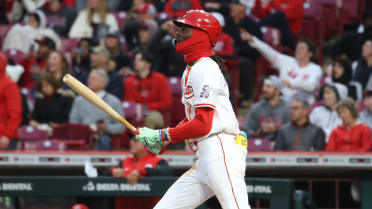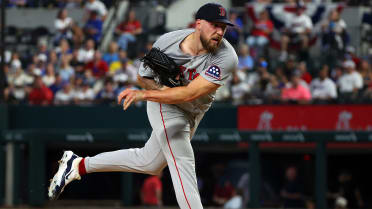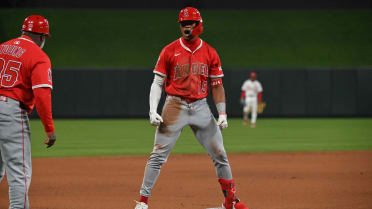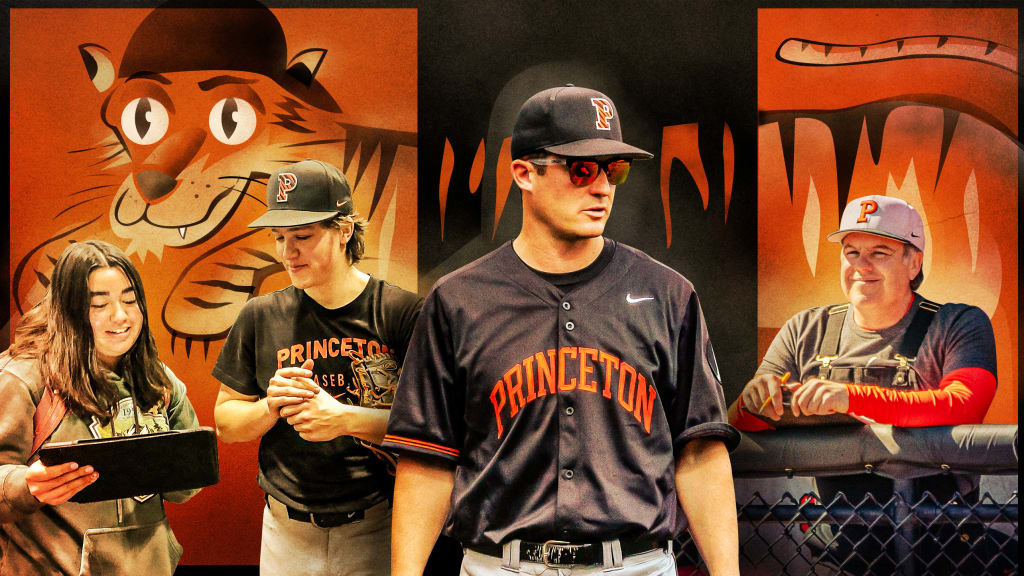
Most dugouts around the baseball world are pretty much the same. You have the players and coaches, a collection of snacks and beverages, baseball equipment and maybe a few binders or tablets filled with any data you might need.
But look inside the Princeton Tigers' dugout and you'll spot something you likely won't find anywhere else: There, perched over the railing and watching the action, may be college baseball's only coverall-wearing geophysicist.
While his day job involves -- and here I am quoting directly from his page in Princeton's department of geosciences -- "using sedimentary and volcanic rocks to extract information about Earth's ancient magnetic field and the relative motion of continents, perturbations to the global carbon cycle, and the coevolution of life and climate" -- Adam C. Maloof's other passion is baseball. (His other, other passion is farming, which explains the outfit choice.)
Originally a DIII baseball player himself, Maloof became a faculty fellow to the baseball team in 2013 -- taking full advantage of the opportunity to spend some extra time around his favorite sport. While other fellows might do some thesis tutoring or lead roundtable discussions, Maloof went the other way.
"For me, since I love playing baseball, I started shagging flies with the team, taking part in scrimmages, and hanging out in the dugout," Maloof said.
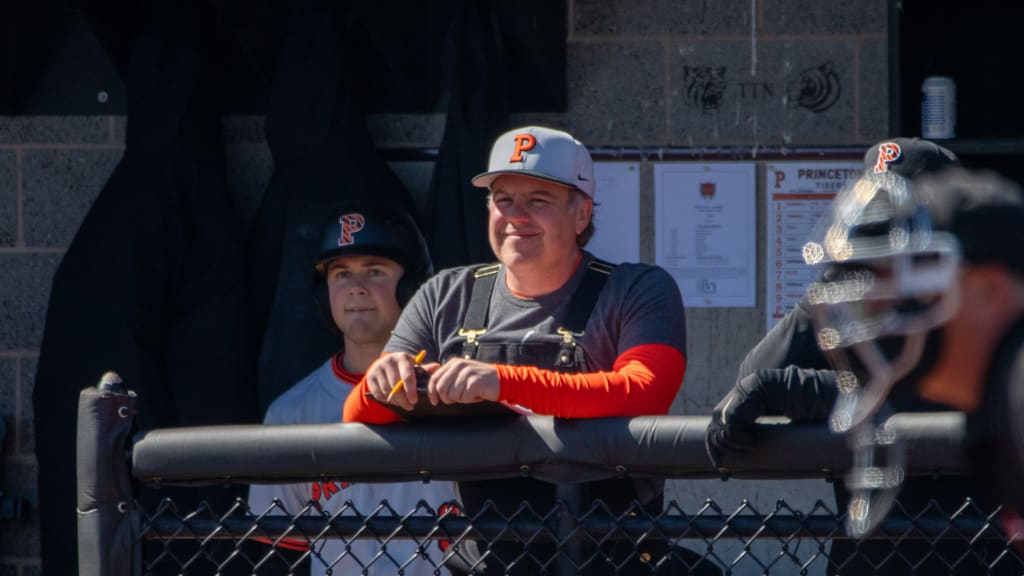
While Maloof would keep score and offer up any information that coach Scott Bradley and his assistants might request, he used very little of his science background with the team.
That all changed when the university hired Joe Haumacher to take over as pitching coach before the 2023 season. Haumacher's résumé was filled with the kind of names that would make a pitching-obsessed person swoon: Along with stints at Amherst College and Dixie State University, he spent three years as an affiliate pitching coach with the Orioles, working closely with Mike Elias, Sig Mejdal and Brad Ciolek in developing the arms that now pepper Baltimore's big league roster. He had also worked with Tom House and the National Pitching Association at the University of Southern California -- making him the perfect person to utilize the brainpower at Princeton to help develop the team's pitching staff.
"The reason I left the Orioles to come here is because I wanted the sandbox to play in," Haumacher said. "I had learned so much from Tom House about how to develop and how the game works at that level. And I learned so much from watching guys like Mike Elias work or learning directly from Sig Mejdal or Brad Ciolek in the Draft. But the world that they're working with, in terms of optimizing a big league roster, is so far away from the messiness of Minor League development, I thought that there could definitely be things done better on the development side."
When Maloof and Haumacher met, they realized they had plenty in common and quickly teamed up -- after an in-depth discussion of cherry pie, of course.
"Day one, when I came out, [Adam] knew the town that I was staying in," Haumacher said. "He talked about the pie that he and his wife like to go out there for -- the cherry pie at the Scone Pony in Spring Lake, New Jersey, is the place, so we connected over that."
(Maloof also shared some other incredibly important information, like: "When you're cold in the dugout, just go pee and your body will warm up, like, 10 degrees because the specific heat of water is so high that your body is working so hard to keep it warm," Haumacher said with a laugh. "[If you go pee] then it actually warms you up. So, really helpful stuff.")
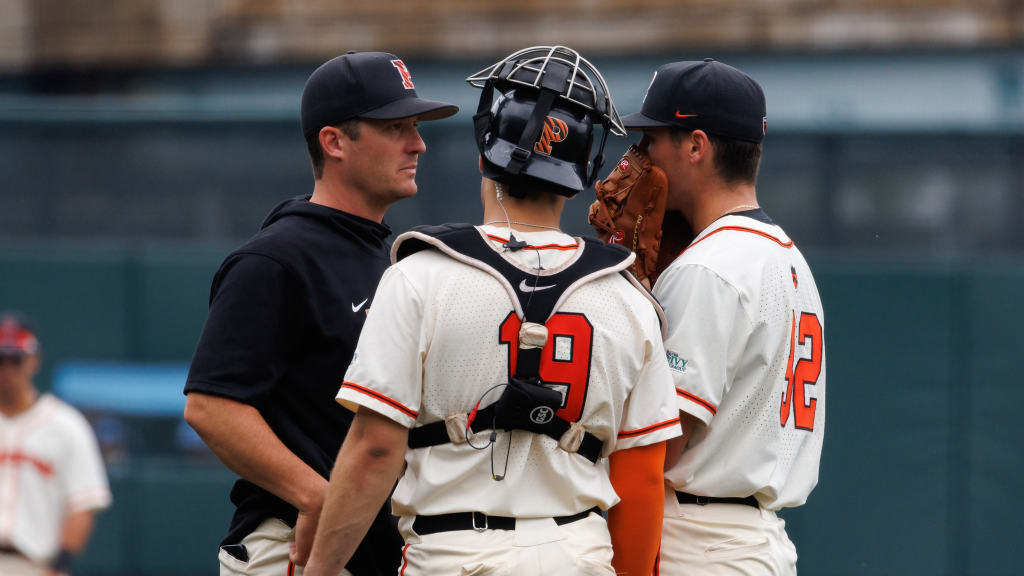
Surprised to hear that the baseball team didn't have any advanced analytics other than one-off projects that Maloof had worked on with students over the years, Haumacher was intent on getting started as soon as possible.
"As soon as I decided that we were going to start up some sort of analytics team, Adam showed up to the first day," Haumacher said. "Since then, it just took off."
Maloof soon put together a class, "Sabermetrics: An Analytical Approach to College Baseball," which was co-taught with Haumacher. Students leapt at the chance to enroll. The brainpower at an Ivy League school that may otherwise be put to work on an econ paper or studying geology from the advent of the Earth could now be devoted to baseball.
"That first class we had, it's what Princeton called a 'student-initiated class," Maloof said. "It's not as rigorous. There isn't really a lecture, it was more like a place where we would gather every week and there was a bit of motivation beyond love of baseball for the students because they were graded and stuff like that."
That meant if a student had an idea, they could design a study and see if there was anything to it. It also meant that if a player or coach on the baseball team was interested in something, the students could put their heads together and see if there was a way to bring data and analysis to help the on-field performance of the team.
"We throw this big idea hopper together," Haumacher said. "Then we look at our Little Giants, and they tell us what they can do and what they're interested in, and then we try to link it up. Then we all get so excited that we get too many projects going at once."
The ideas run the gamut from quantifying a catcher's ability to block pitches to testing the success of a changeup based on grip to even training a hydraulic lift to mimic an individual pitcher's delivery. While that was expected to be used as a training device by Princeton's hitters, it's actually found a new role for the guys squatting behind home plate.
"It's getting fairly sophisticated, but ironically, I think so far this season, our hitters are actually benefiting less from this than our catchers," Maloof said. "Our catching coach, who's brand new and super young, saw the potential, and discussed it with us. Now what he's doing is programming our own pitchers into it, so that he can practice blocking and framing with our catchers."
They've built programs as varied and complex as a pitching app that can measure a pitcher's velocity -- one of those older one-off projects that Maloof worked on with former student and pitcher Chad Powers -- and have used language-learning models to more accurately make spray charts when analyzing fields that lack Trackman technology. Haumacher will even go full English teacher and use Joseph Campbell's hero's journey to center a player's focus and help them actually utilize the data that they've developed.
But if necessity is the mother of invention, then one of their favorite tools came about while stuck training indoors during the winter. While players practiced taking hacks with a net about 180 feet from home plate, they would often want feedback to know if a ball would have been an out or a hit on a real field.
"With our indoor Trackman, Adam took it and made this app called Hit or Not," Haumacher said. "The first time we went to go use it, it basically cycled launch angle and exit velocity and then it spit out a random generated number based upon the amount of outcomes that it has."
Or, in layman's terms: Did the swing result in a hit or not?
It went off like "nuclear warfare," Haumacher joked. "People were duking it out in this indoor scrimmage and they were screaming at us -- all in a respectful way."
One of the players then brought up a valid criticism of the new technology they had invented. Because calculations like wOBA+ don't take the direction of the ball into the equation, it didn't differentiate between a line drive down the line versus one up the middle.
"I went back to the drawing board and figured out a way to account for direction," Maloof said. "The problem in this indoor facility is that Trackman doesn't measure direction accurately, but the eye does. So, now it lets them choose from like five options -- you know, down the line, left field, center field, right field -- and then we compute whether it's a hit or not. It made the app way better. There are fewer arguments."
The two have no idea where the next innovation will come from or where it may end up taking them, but that's part of the fun.
"I feel like a little kid in a candy store," Maloof said. "One of the coaches says like, 'Can you look at it like this?' I love trying to look at it like that. And then, maybe along the way, I find an even better way to look at it. It's so exciting."
Michael Clair writes for MLB.com. He spends a lot of time thinking about walk-up music and believes stirrup socks are an integral part of every formal outfit.

